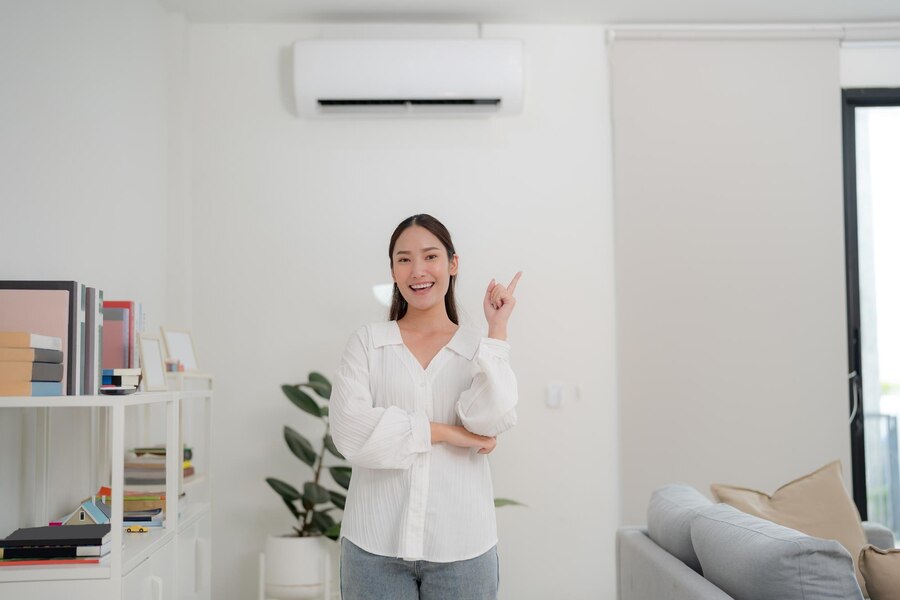
Indoor Air Quality – Frequently Asked Questions Answered
Indoor air quality is a critical factor in ensuring a healthy and comfortable living environment for you and your family. With increasing awareness of the potential health impacts caused by poor air quality, many homeowners have questions about improving and maintaining a safe indoor atmosphere.
If you are worried about your home’s air quality, this S.O.S. Heating & Cooling guide is for you. Keep reading and learn how to identify poor indoor air quality to protect your family’s health and well-being.
1. How Can I Identify Poor Indoor Air Quality?
Recognizing the signs of poor indoor air quality is the first step toward creating a healthier living environment. Common indicators of suboptimal air quality may include:
- Experiencing allergy-like symptoms, such as sneezing, coughing, and eye irritation.
- Persistent odors or musty smells that don’t improve with cleaning or ventilation.
- Visible mold growth or excess condensation on windows and surfaces.
- Increased respiratory issues or asthma symptoms among occupants.
If you notice any of these signs, consider taking action to assess and improve your indoor air quality.
2. What Factors Affect Indoor Air Quality?
Several factors can contribute to poor indoor air quality, including, but not limited to:
- Inadequate ventilation leading to stale air and buildup of pollutants.
- High humidity levels encouraging mold growth and dust mite proliferation.
- Emissions of volatile organic compounds (VOCs) from building materials, furnishings, and household products.
- Particulate matter, such as dust, pollen, and pet dander.
- Combustion byproducts from heating appliances and tobacco smoke.
Understanding these factors can guide you in improving your home’s air quality and protecting your family’s health.
3. How Can I Improve Indoor Air Quality Through Ventilation?
Proper ventilation is essential for maintaining healthy indoor air quality by diluting pollutants and introducing fresh outdoor air into your living space. Follow these guidelines to enhance your home’s ventilation:
- Use exhaust fans in areas with high moisture, such as kitchens, bathrooms, and laundry rooms. This helps to remove pollutants and moisture at the source.
- Consider installing a mechanical ventilation system designed to exchange stale indoor air with clean outdoor air. Energy recovery ventilators (ERVs) or heat recovery ventilators (HRVs) are examples of such systems that can maintain a healthy airflow while minimizing energy losses.
- Open windows strategically to promote air circulation when outdoor air conditions permit, such as during low traffic hours or mild weather conditions.
Implementing better ventilation practices can reduce indoor air pollution and create a healthier, more comfortable living environment.
4. What Role Do Air Filters Play in Improving Indoor Air Quality?
High-quality air filters in your HVAC system are a primary line of defense against airborne pollutants, trapping particles like dust, pollen, and pet dander to maintain cleaner air. However, it’s essential to remember that air filters are only one aspect of creating optimal indoor air quality. Filters cannot effectively control humidity levels, VOCs, or replace a proper ventilation system.
To keep your air filtration system operating efficiently, adhere to these best practices:
- Choose air filters with a higher Minimum Efficiency Reporting Value (MERV) rating, as they can trap smaller particles more effectively.
- Regularly inspect your air filters and replace them as recommended by the manufacturer—typically every one to three months.
- Combining appropriate air filtration with ventilation and humidity control strategies can lead to a comprehensive approach to maintaining good indoor air quality.
5. How Can I Control Indoor Humidity Levels?
Maintaining a balanced indoor humidity level promotes comfort and inhibits mold growth and dust mite proliferation. Here are some effective tips for controlling humidity in your home:
- Utilize a hygrometer to monitor indoor humidity levels. Ideally, maintain 30-50% relative humidity for optimal comfort.
- Employ dehumidifiers or humidifiers, as appropriate, to balance your indoor humidity based on the climate size and climate in your region.
- Proactively address moisture issues—promptly repair leaks, maintain well-vented drainage systems and ensure your home’s exterior grading properly diverts rainwater away from the foundation.
A combination of these strategies can help you maintain a healthy indoor humidity level, contributing to better air quality and a more comfortable living environment.
6. Should I Consider an Air Purifier or Air Cleaner?
Air purifiers and air cleaners can complement your existing HVAC system and address specific indoor air quality concerns in your home. Some benefits of these devices include:
- Targeting pollutant concentrations not adequately addressed by HVAC filters, such as fine particles, odors, or VOCs.
- Providing extra relief and protection for allergy sufferers or individuals with respiratory sensitivities.
Select air purifiers with HEPA filters or activated carbon filters based on your specific needs and the pollutants you want to target. Remember that these devices should not be considered a substitute for proper ventilation—an integrated approach is necessary for maintaining optimal indoor air quality.
Empower Yourself with Expert Indoor Air Quality Solutions
Maintaining good indoor air quality is vital for the health and well-being of your family. As you explore the various factors and solutions discussed in this article, equip yourself with the knowledge needed to take appropriate action and create a healthier living environment. An integrated approach to indoor air quality—including proper ventilation, humidity control, and air filtration—can have a lasting positive impact on your home.
To further assist you in your journey to improve indoor air quality, our skilled professionals offer expert advice and personalized solutions tailored to your unique needs. From HVAC maintenance to air filter replacement in Salt Lake City, we’re here to help you create a cleaner, fresher, and more comfortable living space. Don’t hesitate to reach out to S.O.S. Heating & Cooling today and take the first step toward optimal indoor air quality for your home.
Explore Our Latest Insights and Updates in Plumbing Services

How to Solve AC Airflow Restriction in Salt Lake City

Why Your AC Makes Rattling Noises in Murray Homes

Troubleshooting AC Relay Switch Problems in Mt. Olympus






.avif)